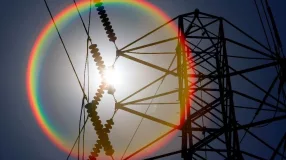INGAA and its members are strongly committed to ensuring the security, reliability and resilience of natural gas transmission pipelines. Functioning as the facilitator on behalf of its members, INGAA works collaboratively and regularly with government agencies to share information about threats and best practices for protecting and enhancing critical energy infrastructure.
On July 29, 2019, INGAA welcomed Michael Isper as its new Director of Security, Reliability and Resilience. We sat down with Mike to discuss his background and how it will translate to his new role at INGAA. Read our Q&A with Mike below:
Tell us about yourself and your background in the industry.
I began my career in the environmental compliance, permitting, and hazmat areas of the energy sector. My transition into the security world began in 2006 when the Chemical Facility Anti-Terrorism Standards (CFATS) program began. At the time, I was the Corporate Hazmat and Chemical reporting lead for Dominion and was asked to lead the company’s CFATS efforts with its Corporate Security Compliance team. When TSA established its Pipeline Security Guidelines in 2010, I led Dominion’s Natural Gas Transmission and Distribution Pipeline Security Program development. After that, I was given the opportunity to drive pipeline security efforts on a national level at TSA.
You have experience in both the public and private sector – an intersection INGAA is very familiar with. How has that combination of government and industry experience been valuable throughout your career?
My experiences in both the public and private sector of the industry have emphasized the importance of perspective. All parties view security, reliability and resilience through a different lens. I look forward in my new role to finding that balance between the private and public sectors and driving change for the better.
What will your new position at INGAA entail?
My primary role as the Director of Security, Reliability and Resilience will be leading the cyber and physical security efforts for the association. This includes managing the ongoing collaboration between member companies and the federal government to ensure the safe and reliable delivery of natural gas to end users.
Pipeline security has become an overarching subject for INGAA and its member companies. For example, it is a focal point in the discussion about the resilience of natural gas and the role of natural gas as a principal fuel for electric power generation. I hope to continue raising the bar for INGAA member companies’ physical and cyber security programs and measures.
What drew you to INGAA and the natural gas pipeline industry?
I felt it was a fantastic opportunity to continue my passion for security in the energy sector. Additionally, through my work at TSA, I was fortunate enough to get to know many of the INGAA members and their security teams, so I’m looking forward to working more closely with these talented people in my new role at INGAA.
What do you see as the natural gas pipeline industry’s greatest strength when it comes to cyber and physical security?
The industry is very proactive, working closely with government agencies to ensure the protection of critical infrastructure through information sharing and best practices. This is achieved through several efforts, including cross-agency initiatives and programs. The collective expertise of these agencies leads to a better understanding of risks, better-informed actions to address them and added opportunities to strengthen the security posture of the industry.
Likewise, what are some of the challenges the industry is facing right now – and what are your main priorities?
In the rapidly changing environment of cyber security, the industry must quickly adapt and update its protocols and procedures. This, however, cannot be done without the flexibility to address new problems as they arise. The industry and government must continue to collaborate and identify new ways to improve the security and safety of our nation’s natural gas transmission pipeline system.
Education can also be a challenge. We must ensure that all levels of government and affected stakeholders appreciate and understand how pipelines operate, the differences from other energy infrastructure, what the industry already is doing when it comes to safety and security. The best public policy on physical and cyber security for pipelines arises when decision makers and stakeholders are well informed.






